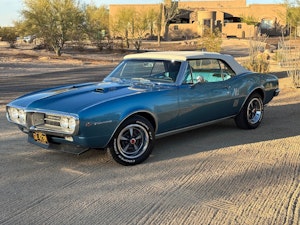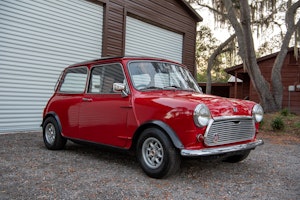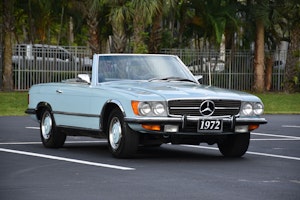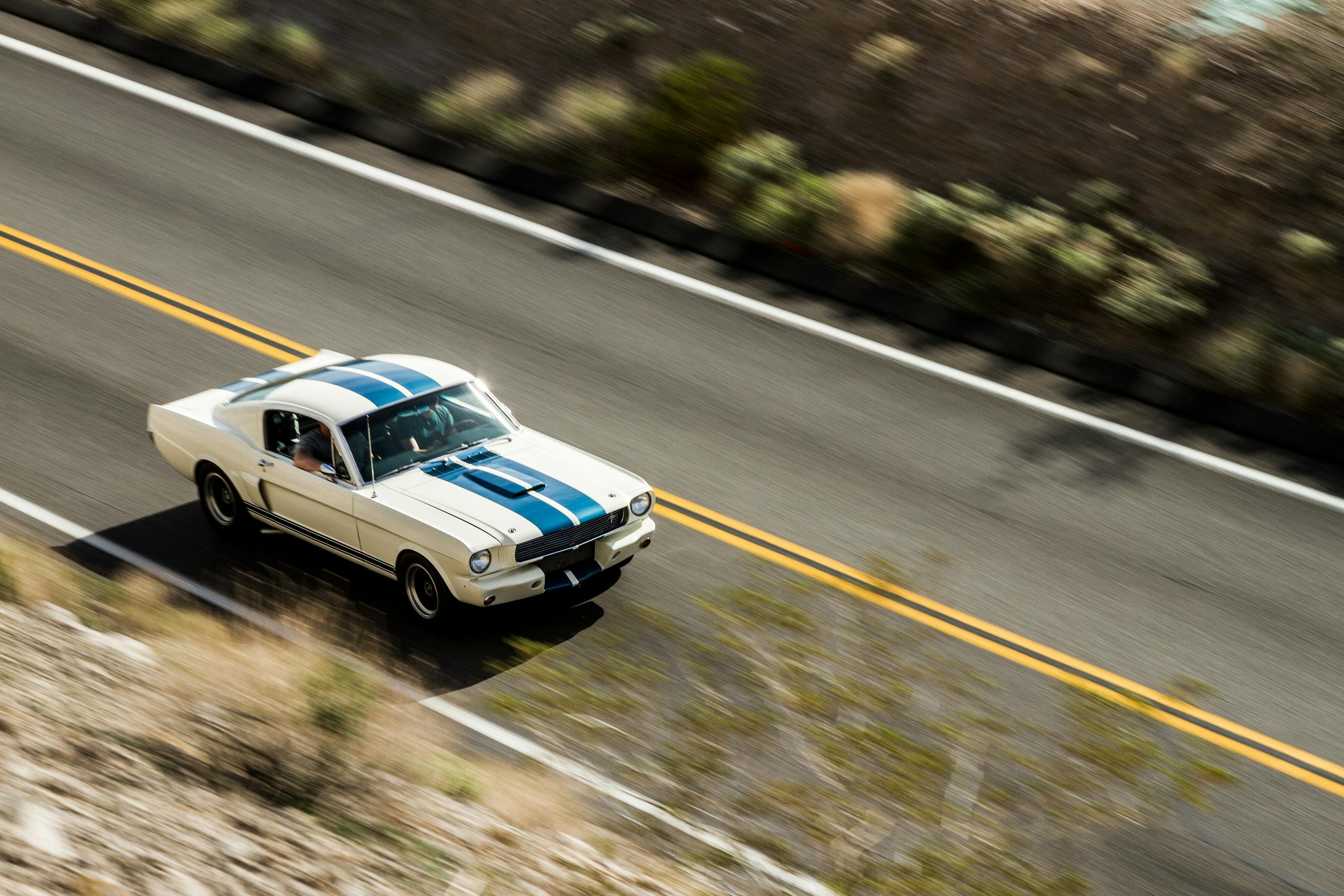Media | Articles
Homage to the Tribute Car: Why we should love homemade replicas
No one knows who built the first tribute car. The question recalls the old line about racing, how the first car race took place shortly after the world’s second car was built. The first tribute car was probably assembled five minutes after some enterprising mechanic noticed that the horseless carriage he wanted was both rare and expensive. When people want what they can’t have, they often fall back on the next best thing—building one instead.
As with much of car culture, there are no rules here, just an idea open to interpretation. Most people use the term “tribute” as a catchall for any vehicle modified to resemble a more desirable machine. For some folks, that act is as simple as buying enough catalog parts to turn a 1965 Mustang fastback into a hyperaccurate clone of a ’65 Shelby GT350R. For other people, the idea might mean rebodying a crashed $300,000 Ferrari 330 GT to resemble a 250 GTO worth $50 million. Maybe you love classic hot rods so much that you rebuilt your plain-Jane ’32 Ford into a pitch-perfect replica of the yellow Deuce in American Graffiti, or your old Model T into a copy of the Grabowski bucket from 77 Sunset Strip. Either way, you wanted a given car, and you didn’t have anything like it, and now you do.
Naturally, some people knock all this. They take issue with a tribute car’s accuracy or harp on some perceived vibe transgression. (“Everyone knows that the Tirepuncher 5000 didn’t have a pinstriped ashtray until ’78!” Or, “No Chevroford EXP-GT-C ever came with radial muffler bearings in period!”) Maybe, if they’re particularly ornery and don’t get out much, these people see tribute cars and wonder why someone bothered to begin with. After all, when you build a tribute, you no longer have a “real” 1965 fastback or 330 GT as Henry II or Enzo intended, just an object that is very much … you.
What point is there in making a car your own? Who likes fun, anyway? Couldn’t afford the real thing, could you, kid?

God forbid.
Marketplace
Buy and sell classics with confidence
Originality can be compelling, and few people think you should modify a historically significant automobile simply because you wish it were something else. But tribute cars are almost always crafted from “regular” versions of common production machines, workaday to begin with. And in that light, anyone who takes issue with you building your dream should probably lighten up. More important, they’re just plain missing out.
It helps to remember where we came from. Automotive development has long hinged on salutes both intentional and not. From Grabowski to General Motors, when your favorite engineers or hot-rodders designed their masterpieces, they were almost certainly influenced by the work of another carmaker, race team, or rod shop. Hot-rodding in particular is a fun one, because its roots lie in expression and improv. Take the 1932 Ford, a centerpiece of hot-rod culture and one of the hobby’s most recognizable blank canvases. Like the rise of American hot-rodding itself, the Ford’s popularity owes much to Hot Rod. Ten issues into the life of that magazine, for the October 1948 cover, publisher Robert Petersen photographed the modified 1932 Ford roadster of California dry-lakes racer Bob McGee. McGee’s bodywork and chassis modifications—among them a one-piece deck, hidden door hinges, a smoothed radiator shell, and a three-piece hood—had been seen elsewhere, but as a package, his car woke an entire country to the Deuce’s potential. Countless imitations followed, everything from full-on clones to cars that treated McGee’s work as a general jumping-off point. On some level, every ’32 roadster built since is a tribute, and the hobby’s free-flowing idea exchange has long been much of what makes hot-rodding great.
Finally, consider the automobile’s intended use: Tribute cars let you drive and share historic moments that might be otherwise doomed to a quiet life of little more than display. By way of example, several years ago, my garage held a 1965 Ford Mustang fastback. From 20 feet, the car appeared to be a lightly modified GT350—rocker stripes, a small-block and a clutch pedal, rear-fender scoops, an R-model front valance and gauges. In reality, the car was born as a no-frills, regular-production coupe. Decades later, someone worked it over, making it drive like and visually resemble its more valuable sibling. I bought the Ford partly because I didn’t have the bank account for a real ’65 GT350, and partly because I adored how it worked. (Fast and snorty, with raw, predictable handling—what’s not to love?) My car didn’t quite feel like a real Shelby, but who’s counting? I drove it hard and often, on back roads and road trips, in the rain and sweltering heat, leaving stop signs sideways in clouds of tire smoke, often with my dog shedding all over the passenger seat. Several months into ownership, while pumping gas in some rural town in the middle of nowhere, it occurred to me that had I been fortunate enough to own a real ’65 GT350, I probably wouldn’t have driven it in the same carefree, glorious fashion.

Not that I wouldn’t have wanted to. But funds tied up in an unmolested piece of history can tilt your head a little. Maybe you hesitate when grabbing the keys if the weather is less than perfect. With a tribute car, you’re free to simply enjoy the experience, as people did when the GT350 or the Deuce or any other legend was only a few years old—when it was just another used car, less a precious relic than a transportation device.
The experience transcends marque or model, and cars like that garner wider appreciation than you might expect. A decade ago, in California, I met a German-born racing driver who badly wanted a 993-chassis Porsche GT2. He could afford to purchase one of those rare beasts, but the model was then illegal for American import, so he used his factory connections to source a whole car’s worth of hyper-rare, new-old-stock GT2 parts. Those parts were then used to turn an ordinary, U.S.-market 993—valuable even then—into a microscopically accurate replica. A few years later, when that driver sold the car, it surprised a few marque experts by bringing much of a real GT2’s value. Partly because it was made of unobtainium parts. And partly because, unlike with the genuine article, mileage didn’t impact value. The new owner was free to drive the pants off it.
Classic cars are nothing if not shareable joy, and in that light, the tribute car is as egalitarian as it gets. There’s also a shared connection with ideas we cherish around here: Learn your history, and appreciate what came before. Carve out your piece of the rock, and don’t worry what others think. And most of all, when in doubt, fling open that garage door and just drive the thing.













You captured the spirit and practicality of the Tribute. Of course, I have one, a Mustang, but not a Shelby. It is a Tribute to the rally Mustang in the French movie, “A Man and a Woman.” It is a ’65, Wimbledon White Coupe outfitted to compete in the Monte Carlo Rally in ’66. The real movie car, known by the French Mustangers as “184”, burned in a fire so Tributes like mine are rare but the only thing we have left.
Tribute cars exist for 2 reasons: the first is as the article says, so you can enjoy a car you cannot afford or that has become so valuable that it is no longer a usable car but is a collector piece and investment (a whole other article to write there), and the second unfortunately is for flippers trying to get more for a plain Jane base model then they could for a plain Jane base model. Some of those guys are asking as much or more for that than the real cars. Anytime an “Eleanor” Mustang is for sale at a price higher than not a 67 Fastback or a actual, real 67 Shelby, you know the tribute was built for profit or multiple resale. Maybe the second reason is why the first reason gets such a bad reputation.
Well said!
It’s not the hobbyist but the deep pockets of businesses scooping up all the useable cars to transform(Mustang, Bronco, etc). They now become unobtainable for the average guy and then end up unaffordable at $250,000+.
I have no problem with tribute cars,- but the dark side is when folks try to pass them off as the real thing.
They say 4000 Cooper S’s were made and 8000 are still on the road. Then throw in re-vins to get around the import limits and reality becomes fantasy. Maybe the builder is honest about the provenance but what about 2-3 sellers down the chain. Caveat Emptor
HO scale Tribute
My all time favorite car would be a blue Superbird.
Vack in 1970 we raced Aurora HOs on my neighbors HI BANK cellar super-speedway
I had a Charger but really wanted a Bird , so I added a modeling putty beak, and a plastic wing.
Both broke off within 20 laps, but DANG she looked SO cool up on the HIGH bank
Mine is a ’68 302 4-speed coupe. Red with a matte-black hood and black center TorqueThrusts.
Like the ’68 Shelby team racecars – except it has a trailer hitch. So it could tow my H Prod Bugeye trailer. (many years ago…) 247,000 (hard) miles.
Bought it off the used-car lot at the dealership where I washed cars senior year in High School. My son learned to drive a stick in it and he also drove it to High School. Thought he was a Cool Breeze just like I did!!
My only issue with “Tribute” is sometimes it seems like everyone does the same thing so the unmodified non-tribute version is hard to find. I don’t know how many GNX tribute Grand National’s I saw back in the day but it was many.
“Tribute” boats are much easier to build and you can start literally from scratch with no original parts at all.
I built two 16 ft. 1934 Gar Wood speedster replicas. One with a 350 V8, the other with a Mazda Rotary engine.
Twenty years ago I had them insured with Hagerty, back when they only insured classic boats, not cars.
When you begin to look at the prices… Two unit body Plymouths go down the assembly line. One gets a 318 V8, the other a Hemi and a Dana rear end with a 4 speed. Both have bench seats and a pillar coupe body. The difference in value today is now about $200,000. Why not just take a good Belvedere unit body and build what you want? Same for a K code Mustang. Shelbys had a modified front suspension. The template to do that work is available and you can drill the holes and change the geometry yourself. Add some springs, trailing arms, Detroit Locker and some Konis, and you have, essentially, a Shelby. Go enjoy it. Feel free to paint on stripes, add engine mods, roll bar… Whatever. ‘Would have been legal in SCCA back then, anyway. And, you would not have the better part of $300K in it.
I owned a rare ’90 Saleen notchback. I did a lot of work to that car, improving the suspension and the power train. Then, I built 3 more for friends, each a clone of a very special Saleen, but without the body bits, cause, you know, they didn’t have anything to do with the way that the car drove. The original is now a prized possession in someone’s collection, and worth about 5X its original price. You can build a clone from a clean Fox body for about 20% of that, and get all the important bits, and maybe more power and better brakes.
Most of the tribute cars have a production unit body, and use production parts to become a better car. You can do the same things that the factory did, and make your own.
The problem with tributes comes when it only includes some paint stripes and wheels, without the good engine, gearbox, quicker steering or suspension modifications. Then, it’s just a poser.
i myself took a T code 66 mustang convertible and turned it into a GT350 tribute car.but with a little of the way i would have ordered the car in 66.i have all the Shelby badging all the down to the repop rad hoses with Shelby on them.i have red and white deluxe pony interior instead of the black base interior cause its beautiful that way to me.and i love the look of the GT350 with the red with white stripes and i only get positive comments and people asking me if its real and i never lie i always say no its a tribute car its a dream to drive and my Psychiatrist all my problems go away for the time im in my car
On this week’s episode of Pawn Stars, a guy had a 84 Gran Prix Richard Petty 200th win tribute car that the King had autographed the glove box door. There is of course alot of speculation on whether this show is just tv or has any realism. Rick offered 90k$ , the owner/actor wanted 125 and wouldn’t budge. The car seemed really accurate however, and was street legal. Headlights/tail lights/turn signals were hidden behind covers. I liked it.
Tribute cars are the way to go. You can actually drive them and not get into a panic attack if it happens to start raining when you are out. If I recall correctly, someone paid around $3.4 million for the Bullitt Mustang, and I’m sure it will never get driven. A creative person could probably build a reliable tribute Mustang fastback, Torque Thrusts, proper green paint, 390 (or even 302) and a 4 speed for $50-60K. And, you could drive it hard and actually enjoy it. Life is too short to own paperweights.
For the Bullitt Mustang tribute, don’t forget the dent in the front bumper. It’s in the movie.
I don’t mind tribute cars, I like certain ones more than others, they certainly have their place in the hobby, the best ones to me are the ones that are at least 90 percent correct looking, and then taken a notch above the real deal, simple example is a 1965 Shelby GT 350 that looks great, very close to the real deal, but the motor is actually a 347 stroker, more horsepower and torque for the street, some modern suspension tweaks that makes the car stick better than the original real deal, it’s all good. With the price of a real 1965 Shelby now hitting a half million or more, spending $ 200k to build a real good tribute is not so far fetched anymore, 95% of the people won’t know the difference when you are going down the road enjoying everything you have done to the car..Enjoy!
Well aware of the gold standards that rule the automotive hobby but add the correct performance parts to a reproduction muscle car and the only real difference is on paper. Personally I can’t and won’t knock good workmanship or someone’s honest attempt to build their dream car no matter what it originally came with from the factory or without. A great car is a great car
I am among the choir to whom Sam preaches.
I totally agree. I’m in the process of collecting vintage speed parts for a “Day 2” 66 Biscayne that I have. It’s been a fun and sometimes frustrating journey doing the research, finding parts etc. I’m looking forward to be able to drive My L-72 tribute with a real deal 427. It’s been a dream of mine for quite a while. I will not be afraid to drive it as the originals were intended to be drive HARD!!